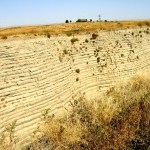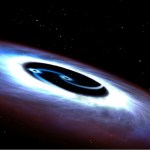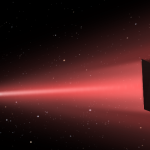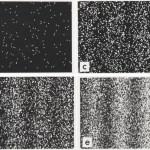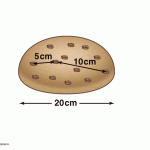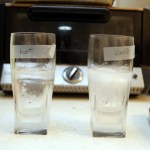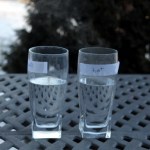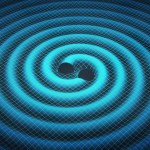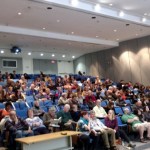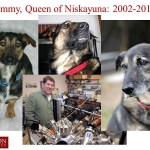Physics
As you probably already know, last year we ran a workshop at the Joint Quantum Institute for science-fiction writers who would like to learn more about quantum physics. The workshop was a lot of fun from the speaker/oragnizer side, and very well received by last year's writers, so we're doing it again:
The Schrödinger Sessions is a three-day workshop for science fiction writers offering a “crash course” in modern physics, to be held at the Joint Quantum Institute (JQI), one of the world’s leading research centers for the study of quantum mechanics. We will introduce participants to…
A few weeks ago, I traveled down to Jefferson Lab in southern Virginia to give a talk for their Science Series of public lectures. They recorded the talk, and have done a very nice job of editing together the video, which you can see at that link, or right here:
It's a bit under an hour, which must include the Q&A period at the end. So, if you've been wondering what sort of thing I do when I travel to give talks, well, here's an example. And it'll give you something to keep you entertained while I travel to Illinois to give another (different) talk tomorrow...
It's been a few weeks since my last summary of physics posts I've been doing at Forbes, so here's the latest eclectic collection:
-- Football Physics And the Myth Of The Dumb Jock: In honor of the Super Bowl, repeating the argument from Eureka that athletes are not, in fact, dumb jocks, but excellent scientific thinkers. Of course, the actual game tat night was horribly ugly, not a compelling display of anything in particular...
-- How Can A Laser Make A Plane Turn Around?: A quick post on the optics of lasers, spinning off a news of the weird story about a flight that had to return after a "…
I've been really, really bad about using this blog to promote stuff I have coming up, but I'll be doing two public-ish appearances in the month of March, and I probably ought to announce those here:
1) Next week, on Wednesday, March 2, I'll be giving the Physics Colloquium at the University of Illinois, on public communication stuff:
"Talking Dogs and Galileian Blogs: Social Media for Communicating Science"
Modern social media technologies provide an unprecedented opportunity to engage and inform a broad audience about the practice and products of science. Such outreach efforts are…
"Will you or won't you? Should you or shouldn't you?
Use this day to do something daring, extraordinary and unlike yourself." -Vera Nazarian
The need for a February 29th, once every four years or so, doesn't just give us an extra day this year, but it keeps the calendar from drifting and failing to align with the seasons. Even so, the scheme we have worked out today -- where years divisible by 4 but not those divisible by 100 unless also divisible by 400 get an extra day -- isn't perfect, and will get worse as time goes on.
Image credit: flickr user Kevin Gill, under c.c.a.-s.a.-2.0. A quick…
"Even if the Fermi detection is a false alarm, future LIGO events should be monitored for accompanying light irrespective of whether they originate from black hole mergers. Nature can always surprise us." -Avi Loeb
Ever since LIGO first announced the direct detection of gravitational waves from two merging black holes, the physics and astronomy community has been struggling to understand an unexpected phenomenon that appears to have come along with it: a short-period gamma ray burst.
An artist’s impression of two stars orbiting each other and progressing (from left to right) to merger with…
"Greatness is not in were we stand, but in what direction we are moving. We must sail sometimes with the wind, and sometimes against it - but sail we must. And not drift, nor lie at anchor." –Oliver Wendell Holmes
It's long been a dream of humanity to travel interplanetary distances at great speeds, or to make it to another star system within a human lifetime. Until recently, technologies to get us there -- antimatter propulsion, wormholes or warp drive -- have all been composed of physically unrealistic solutions. But recent developments in laser technology make directed energy propulsion a…
“You asked me how to get out of the finite dimensions when I feel like it. I certainly don't use logic when I do it. Logic's the first thing you have to get rid of.” -J.D. Salinger
Now that gravitational waves have been verified to exist, and the first black hole-black hole merger has been definitively detected by LIGO, it's time to start thinking of the next steps in gravitational wave astronomy. The biggest one we can dream of, perhaps the holy grail of this field of study, is to go beyond General Relativity itself, and to find evidence that gravitation is a truly quantum theory at its core…
"Mathematicians deal with possible worlds, with an infinite number of logically consistent systems. Observers explore the one particular world we inhabit. Between the two stands the theorist. He studies possible worlds but only those which are compatible with the information furnished by observers. In other words, theory attempts to segregate the minimum number of possible worlds which must include the actual world we inhabit." -Edwin Hubble
The combined work of many 20th century astronomers and physicists -- including Einstein, Slipher, Leavitt and Hubble -- led to the conclusion…
“If the imprint is really due to gravitational waves from the big bang, then this is the type of cosmological discovery that comes along perhaps once every fifty years.” -Kip Thorne
Now that LIGO's successfully detected it's first gravitational waves — from two merging black holes — we know that we will find them in a variety of circumstances if we look in the right way.
Illustration of a fast gamma-ray burst, previously only thought to occur from the merger of neutron stars. Image credit: ESO.
While LIGO and its successors will be great for exploring high-frequency events like small black…
One of my favorite modern tales of scientific discovery is the Mpemba Effect, named after Erasto Mpemba, a schoolboy in Tanzania who noticed while making ice cream that hot mix put in the freezer solidified faster than cold. This counter-intuitive result has been replicated a bunch of times, and physicists and chemists continue to debate the reason for it.
It was bitterly cold this weekend, dipping down into the negative Fahrenheit, which wasn't great for, you know, leaving the house, but did provide an opportunity to test the Mpemba Effect. Because when the icy winds of winter blow, that's a…
It was bitterly cold over the weekend here in the Northeast, with daytime high temepratures in the single digits Fahrenheit. This has little to recommend it in terms of, you know, leaving the house, but it did provide an opportunity to try some SCIENCE!
Unfortunately, I left the notepad with the data (such as it is) on it at home when I came to Starbucks to write, so I can't do the detailed write-up. I'll use it for the photo of the day, though, from which you can probably guess what I was trying to do:
Starting condition for a science experiment.
Detailed explanation of methods and…
“Look, there's no metaphysics on earth like chocolates.” -Fernando Pessoa
One of the most iconic associations with Valentine's Day is chocolate. And not just any chocolate, mind you, but good-quality chocolate, with a creamy, silky-smooth texture, a firm but shiny structure, and an even, rich consistency and taste throughout.
Image credit: Moyan Brenn of flickr, under c.c.-by-2.0, via https://www.flickr.com/photos/aigle_dore/8994313260.
Perhaps surprisingly, there's a rich and complex science behind it. Chocolate can come in six different crystalline structures, and by properly controlling…
In 2011 Daniel Holz gave a Heinz R. Pagels Public Lecture at the Aspen Center for Physics on the topic of Gravitational Waves. The talk is one of the better explanations of what this is all about, with a bonus introduction!
LIGO and allies have also provided a bunch of fun useful stuff:
Have We Detected Gravitational Waves Yet?
Stretch and Squash
Black Hole Hunter
Einstein@Home
Gravitational Waves 101 - Markus Pössel's excellent visualizations.
The Data
The Papers
SXS - Simulating eXtreme Spacetimes visualizations
The Chirp - courtesy of Georgia Tech GR group
February 11th was a good day.
I spent the day at the "Dynamics and accretion at the Galactic Center" Conference at the Aspen Center for Physics, where about 75 physicists have spent the week talking about black holes and stuff.
This morning we watched the LIGO press conference, frantically deciphered the papers, and had a LIGO Science Collaboration member give us a very good rundown of what the situation is.
Over the last few months, LIGO has been making some very good outreach material to explain what is what:
LIGO: A Passion for Understanding a film by Kai Staats
LIGO: Generations
LIGO…
"Ladies and gentlemen, we have detected gravitational waves." -David Reitze
More than 100 years after Einstein's relativity came out, one of its last great predictions -- the existence of gravitational radiation -- has been directly experimentally confirmed! The LIGO collaboration has observed two ~30 solar mass black holes merging together, producing a slightly less massive final black hole as three sun's worth of mass was converted into energy via Einstein's E = mc^2.
Image credit: R. Hurt – Caltech/JPL.
This type of event, although quite serendipitous for the LIGO collaboration, is…
I did bring my good camera with me to Newport News, and took it on the tour of Jefferson Lab yesterday, but despite the existence of DSLR pics, you're getting a cell-phone snap for the photo of the day:
That's the audience about 10-15 minutes before my talk last night, so it was a good turnout. And they laughed in the right places, and asked some really good questions last night. I also got asked to appear in a selfie with a bunch of students from a local school, so they could prove they were there to get extra credit for their science class...
The talk went well, though we had some…
I've been remiss in my self-promotional duties, but I'm giving a public lecture tomorrow night in Newport News, VA, as part of the Jefferson Lab Science Series. This will be my traditional "What Every Dog Should Know About Quantum Physics" talk, with the sad addition of a slide honoring the late, great Queen of Niskayuna (visible as the "featured image" with this post). This isn't the first dog-physics talk I've given since her death in December, but the previous one was the relativity talk, which has less Emmy-specific content. This one includes one of the video clips I made around a dog…
In yesterday's post about the lack of money in academia, I mentioned in passing that lack of funding is part of the reason for the slow pace of progress on improving faculty diversity. That is, we could make more rapid progress if we suddenly found shitloads of money and could go on a massive hiring binge, but in the absence of flipping great wodges of cash, change comes more slowly.
This, naturally, sparked a sort of morbid curiosity about whether the scale of this problem would be quantifiable, and of course, there's the AIP Statistical Research Center offering numbers on all sorts of…
